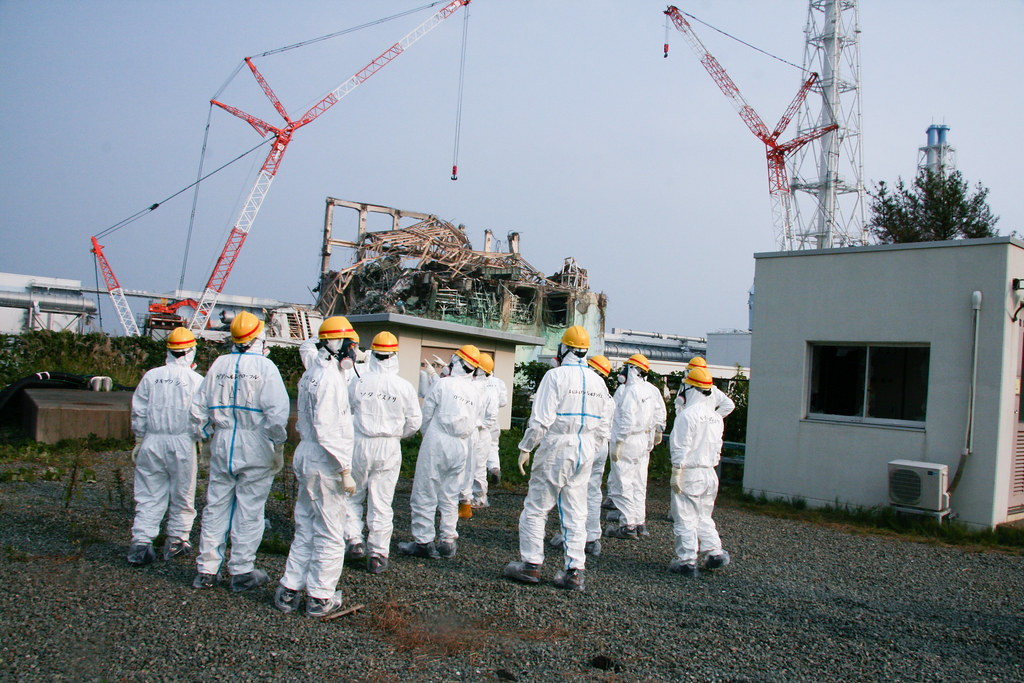Laser fusion potential alternative to magnetic confinement
The intense heating of the capsule surface creates a micro-implosion of the fuel, and, as a result, the pellet’s surface layer is ablated and explodes.

Laser fusion is a method of igniting nuclear fusion reactions and is a potential alternative to magnetic confinement. It does this through inertial confinement, using high-power lasers to heat and compress tiny spherical capsules containing fuel pellets made up of hydrogen isotopes such as deuterium and tritium.
The intense heating of the capsule surface creates a micro-implosion of the fuel, and, as a result, the pellet’s surface layer is ablated and explodes. The inertia created by this process keeps the fuel confined for long enough for fusion reactions to take place.
Experiments in the field of laser fusion began in the 1970s. Today, the National Ignition Facility (NIF) at the Lawrence Livermore National Laboratory in the United States of America has 192 laser beams and is easily the world’s biggest laser facility. At NIF, lasers heat the inner walls of a cylindrical golden container, called a hohlraum, that holds the capsule containing the deuterium–tritium fuel pellet. The laser–hohlraum interaction generates X-rays, which heat up and compress the capsule, creating a central hot spot inside the pellet, where fusion reactions take place.
To achieve ignition — the point at which fusion becomes completely self-sustaining — NIF’s capsules should release around 30 times more energy than they absorb.
“We have made significant progress at NIF over the past five years and are now able to produce two and a half to three times more energy than what we put into the hot spot of the fuel,” said Brian Spears, Deputy Lead for Modelling in Inertial Confinement Fusion at NIF. “Getting to the 30 times amplification gain is still a major goal, but this is a non-linear process and we have already taken many important technical steps to get there.”
Increasing the central pressure inside the fuel hot spot to several billion times of atmospheric pressure is key to achieving commercially viable fusion. NIF has made substantial progress in this area by shifting from plastic to micro crystalline, high density carbon capsules, improving engineering features used to support the capsules and enhancing the structures used to fill the capsule with fusion fuel. This allowed experts to significantly increase the energy coupling efficiency from the energy produced by the laser to the energy absorbed by the capsule, and ultimately produce more energy.
“Major scientific challenges still lie ahead, but recent advancements at NIF and other facilities prove that we are getting closer to achieving the ignition threshold via laser fusion,” said Spears.
In 2020, the IAEA launched a new coordinated research project (CRP), entitled “Pathways to Energy from Inertial Fusion: Materials Research and Technology Development”. The project, which involves 24 institutes from 17 countries and is the fourth instalment in a CRP series on this field, focuses on developing high-gain capsule designs to achieve completely self-sustaining fusion.Fusion from colliding beamsAnother alternative to the magnetic confinement approach is using ion beams generated by particle accelerators and targeting them at each other, with fusion taking place at their collision point. A big disadvantage of this method is that the probability of the particles bouncing off one another without fusing and producing energy is high.
The private US company TAE Technologies (TAE) uses a linear device: a 25-metre-long cylindrical reactor. Fusion is achieved by firing off two plasmas from each end of the reactor, which collide and merge in a cloud in the centre. Deuterium atoms are then fired into the cloud to make it spin, thus keeping the plasmas hot and stable.From alternative confinement to advanced fuelsAnother advantage of fusion through lasers or linear devices is that these methods could more easily adapt to the use of fuels other than deuterium and tritium. Traditionally, a mixture of these hydrogen isotopes has been used to achieve fusion because they reach the highest reaction rate at a lower temperature than other fuels.
However, tritium is radioactive and does not occur naturally in any significant quantities. Therefore, it has to be ‘bred’ in a nuclear reaction between the fusion-generated neutrons and lithium surrounding the reactor wall. The energy of these neutrons also presents significant challenges regarding the materials in the reactor vacuum vessel, since, when the neutrons collide with the reactor walls, its structures and components become radioactive. This necessitates additional considerations in radiation safety and waste disposal.
To bypass the challenges caused by the use of tritium, there are now experiments using alternative or advanced fusion fuels, such as proton–boron-11 (p–B-11). Boron-11 is non-radioactive and comprises around 80 percent of all boron found in nature, so it is readily available. However, the major problem with p–B-11 fusion is that it would require the plasma to be a hundred times hotter than plasma containing deuterium and tritium. Fortunately, with laser ignition or linear devices, heating is constrained to the hot spots, without the overall plasma having to be significantly hotter.
“P–B-11 is the cleanest, most environmentally friendly fuel source on Earth, with no harmful by-products and enough natural supply to sustain the planet for millennia. Together, these factors can maximize the safety, economics, efficiency and durability of fusion power plants,” said Michl Binderbauer, TAE’s Chief Executive Officer. “The main difficulty with p–B-11 is that it requires higher temperatures than other fuel cycles to sustain the fusion reaction. TAE has developed an alternative confinement concept to address this challenge.”
Advanced fuels could thus provide a more effective and efficient way to produce fusion energy in the future.
- READ MORE ON:
- Laser fusion
- magnetic confinement
- National Ignition Facility










